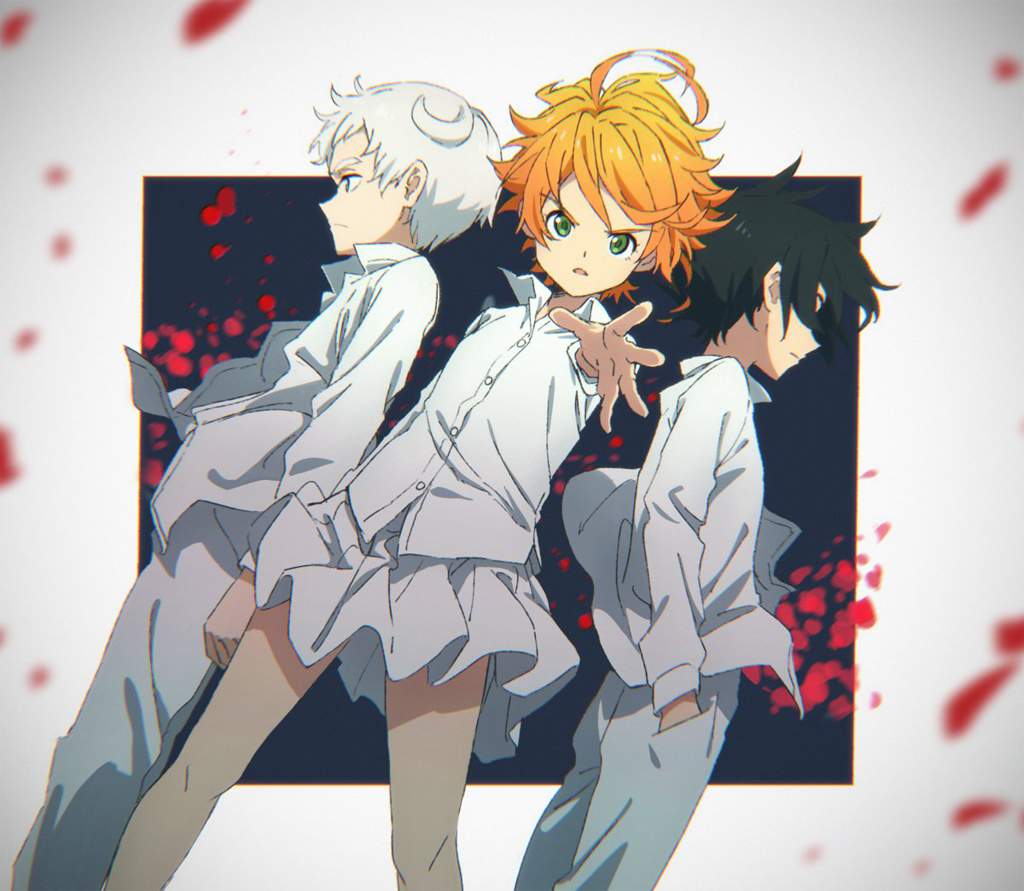

She never reaches her goal or realises her ambitions, and the children can only look back on her pityingly. Her body shape is considerably muscular and more masculine than Isabella, the more feminised white woman. Sister Krone is not in the manga for long, but her purpose is mainly to help the main cast progress through the plot: she scares them, she gets manipulated by her superiors, she has a change of heart and helps the children, and then she's gone. Demizu Posuka, The Promised Neverland's artist, whilst talented, tends to reproduce racialised imagery for Krone's design: large clown nose, wide rubber lips, crescent eyes. Her design is monstrous and alarming, and her appearances are often used for jump scares and shock value.
#THE PROMISED NEVERLAND MANGA SERIES#
I won't give too much away about the character, but Krone appears as one of the rare adults in the series who visits Grace Field House. It was disappointing, therefore, to see such a trailblazing series fall into racialised tropes for another significant woman in the series, Sister Krone. There are of course women characters that break this trend, Anna from Shaman King is truly brilliant, for example, but have we ever seen a main character quite like Emma? It's unusual to see a female protagonist of this nature in Shonen Jump after all, it's a shonen magazine, and we've been given the impression that young men only want to read stories about other young men, but also, she totally contradicts the typical shonen females we have become accustomed to: overly sexualised like in Bleach, passive and sidelined like the kunoichi in Naruto, princessy, and if strong, then very quickly disarmed or disabled like the women of One Piece (compare the Robin we were introduced to in Alabasta with the silent Robin in Dressrosa, or the dichotomous nature of Amazon Lily-era Hancock and the heart-eyed mess during Marineford). At times her character veers into the choppy waters of Nakamaland, but this can be easily assuaged by her age: just eleven years old and still a little idealistic. She leads the pack, she encourages her friends, and her intelligence, wit and bravery are not anomalies to those around her. When the kids find out, their lives change forever.Įverything about it is interesting, from the child prodigy cast, to the innocent friendships, to the female protagonist who is not weak, nor any less intelligent than the males around her. That's the basic premise of the manga, but of course, there is a reason why they are in the orphanage, and a reason for the exams, the numbers on their necks, and the lack of adults. It is early established that the Grace Field children are not your average bunch, and their collective intellect proves vital during various parts of the story.

Emma, Ray and Norman comprise the central trio, and their scores permanently dominate the top three positions. They are branded with numbers on their necks, and the only oddity is a series of arduous written exams they have to complete daily, their scores collated and ranked to determine the truly gifted children from the only-slightly gifted. Set in the orphanage at Grace Field House, a group of children cared for by their "Mother", the kind Isabella, are nurtured until each of them are hopefully adopted by new parents. The Promised Neverland by Kaiu Shirai is one of the freshest, most intriguing and unique stories to be published in Jump for a while. As the years progressed and my tastes diversified, I reconciled with the criticisms of Jump manga: formulaic, contrived, easy plots that were fixated with the Big Three, and yet despite the critics, I could always identify at least one series that challenged their theory: Hunter x Hunter, Assassination Classroom, and now recently, The Promised Neverland. Naruto, Bleach, One Piece, Death Note, Shaman King, all carried the Shonen Jump seal. I soon noticed a pattern, that the majority of my favourite series had the same logo on the back page. I quickly joined a small but committed community of pupils that circulated Naruto theories, engaged in Big Three debates, and read weekly scans on OneManga. I was introduced to Jump in secondary school, at the dawn of YouTube, back when Dattebayo's Naruto subs were regularly ripped and uploaded on the site without their permission (leading to their defiant withdrawal from the web). This series, when it appears, will stand as a reminder of why the magazine is so legendary. Every so often Shonen Jump provides us with a rare gem.


 0 kommentar(er)
0 kommentar(er)
